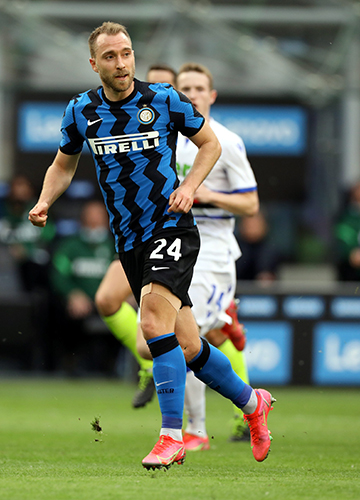Denmark vs Finland. The Euro 2020 match this June between the Nordic countries was supposed to be one of the low-key fixtures of the group stages, and yet it turned out to be the most talked about.
The world watched in horror as Danish star midfielder Christian Eriksen collapsed face first in the 43rd minute of the game and players of both teams rushed to revive him. He had suffered a cardiac arrest.
German doctor Jens Kleinfeld was by his side within seconds, performing cardiopulmonary resuscitation (CPR). An electric shock from a defibrillator worked and Eriksen opened his eyes after 30 seconds.
“Are you back with us?” Kleinfeld asked Eriksen.
“Yes, I am back,” Eriksen responded feebly. “Damn, I’m only 29 years old!”
The player’s words echoed what was on everybody’s mind: how could a fit athlete at the top of his game suffer a cardiac arrest mid-match?
As Eriksen was transferred to a hospital and news trickled in of his health improving, possible reasons for the sudden attack were being spelled out by physicians.
Eriksen was playing in his 66th competitive fixture in exactly one year since football restarted after a break because of the pandemic. Just a few hours before Denmark’s first Euro 2020 game, FIFPRO—a global union of professional footballers—had reiterated its long-standing view that players were under increasing pressure because of a congested schedule.
The Dane’s former cardiologist, Dr Sanjay Sharma of St George’s University, London, had told The Mail that Eriksen had no prior history of heart issues. He had been screened regularly since 2013 at football club Tottenham Hotspur and the tests always returned normal.
The doctor’s inference was that FIFPRO is right. The relentless schedule can take its toll on athletes, though it may not seem like it. The fatigue of extended periods in a bio-bubble with little rest between tournaments was also cited as one of the reasons for the Indian cricket team’s dismal show at the T20 World Cup, as players like Virat Kohli voiced the need to “manage his workload”.
Six days after the unexpected attack, Eriksen walked out of the hospital. He is fitted with an implantable cardioverter-defibrillator in his chest, a device that addresses irregular heart rhythms. He has been undergoing rehabilitation in Denmark.
Though he has been given the green light to resume light physical activity, his doctors have told him that it would take at least a year of monitoring him to decide if he can resume high-intensity training and competitive football.
For now, the Italian league, where Eriksen plays domestic football, does not allow players to participate with devices like the ICD fitted to them. His club, Inter Milan, has since prohibited him from returning to action for the remainder of the ongoing season, which ends in May 2022.
Doctors have told Eriksen that follow-up tests would tell whether the ICD would be a permanent fixture for him or whether it can be removed by next year. It is uncommon for footballers to play with ICDs, but not unheard of. Dutch defender Daley Blind was fitted with an ICD in 2019 after being diagnosed with heart muscle inflammation, but he has continued playing for both club (Ajax) and country.
Eriksen might be back on the pitch next year, perhaps in a different domestic league where ICDs are allowed. But the concerns remain of overworking professional athletes as more competitions are squeezed into their calendar every other day.


